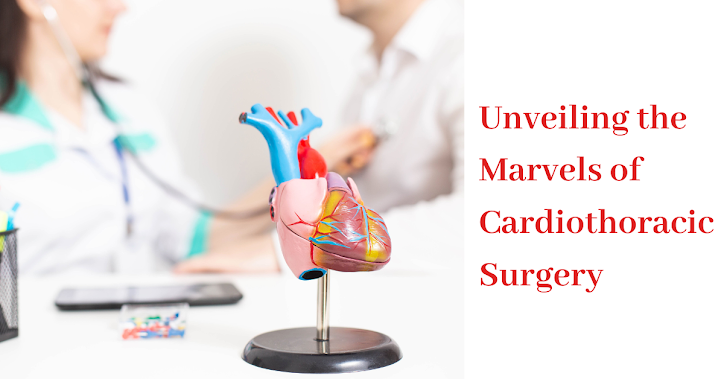Unveiling the Marvels of Cardiothoracic Surgery: Saving Lives, Restoring Hope
The Essence of Cardiothoracic Surgery
Cardiothoracic surgery encompasses surgical interventions pertaining to the heart, lungs, and thoracic cavity. The skilled hands of cardiothoracic surgeons work tirelessly to correct congenital heart defects, repair damaged heart valves, remove tumors, restore blood flow to the heart, and treat conditions such as coronary artery disease and lung diseases. The field requires a delicate balance of technical precision, expertise, and compassion.
Coronary Artery Bypass Grafting (CABG)
Coronary artery disease, a leading cause of heart-related morbidity and mortality, can be effectively treated through coronary artery bypass grafting. This procedure involves using a healthy blood vessel, often sourced from the patient's leg or chest, to bypass the blocked or narrowed coronary arteries, thereby restoring proper blood flow to the heart muscle. CABG can alleviate chest pain, improve heart function, and reduce the risk of heart attacks.
Valve Repair and Replacement
The intricate valves within the heart play a crucial role in maintaining proper blood flow. However, disease or damage can hinder their functionality, necessitating valve repair or replacement. Surgeons employ various techniques, such as repairing valve leaflets or using prosthetic valves, to restore proper valve function and prevent complications. Advances in minimally invasive valve replacement approaches have revolutionized valve surgeries, reducing recovery time and enhancing patient outcomes.
Lung Transplantation
For patients with end-stage lung disease, a lung transplantation can offer a lifeline. This intricate procedure involves replacing a diseased or damaged lung with a healthy lung from a deceased donor. The transplantation process requires meticulous coordination, including donor matching, organ preservation, and surgical precision. Successful lung transplants can dramatically improve a patient's quality of life, allowing them to breathe freely and engage in activities they once thought impossible.
Aortic Aneurysm Repair
Aortic aneurysms, abnormal bulges in the walls of the aorta, can pose a life-threatening risk if they rupture. Cardiothoracic surgeons can employ open surgery or minimally invasive endovascular techniques to repair or replace the weakened section of the aorta, preventing rupture and restoring normal blood flow. Early detection and timely intervention are crucial in treating aortic aneurysms and preventing potential catastrophic consequences.
Extracorporeal Membrane Oxygenation (ECMO)
In cases of severe heart or lung failure, extracorporeal membrane oxygenation (ECMO) can provide temporary life support. This technique involves using a machine to oxygenate the blood outside the body, bypassing the compromised heart or lungs and allowing them to rest and recover. ECMO serves as a bridge to recovery or transplantation, offering critically ill patients a chance at survival while their organs heal.
Advances in Robotic-Assisted Surgery
Technological advancements have revolutionized cardiothoracic surgery, with robotic-assisted procedures leading the way. Robotic surgery enables surgeons to perform intricate operations with enhanced precision, minimal invasiveness, and faster recovery times. With the aid of robotic systems, cardiothoracic surgeons can navigate complex anatomical structures with greater dexterity, facilitating improved patient outcomes and shorter hospital stays.
Cardiothoracic surgery remains at the forefront of medical innovation, continually pushing the boundaries of what is possible in the treatment of heart and lung diseases. Through procedures like coronary artery bypass grafting, valve repair and replacement, lung transplantation, aortic aneurysm repair, and advancements in robotic-assisted surgery, patients are given hope, a second chance at life. The expertise and dedication of Best Cardiothoracic surgeons, coupled with ongoing research and technological advancements, pave the way for a future where the most intricate of cardiac and thoracic conditions can be successfully treated.
As we marvel at the wonders of cardiothoracic surgery, let us celebrate the remarkable achievements that have saved countless lives and continue to restore hope in the hearts and lungs of patients worldwide.




Comments
Post a Comment